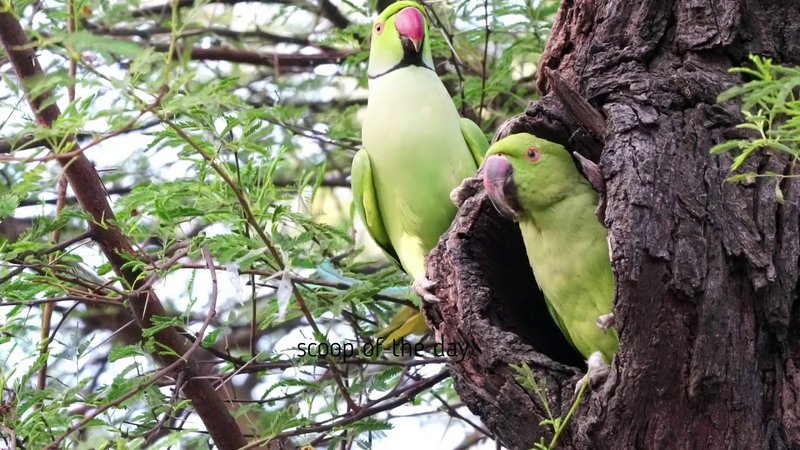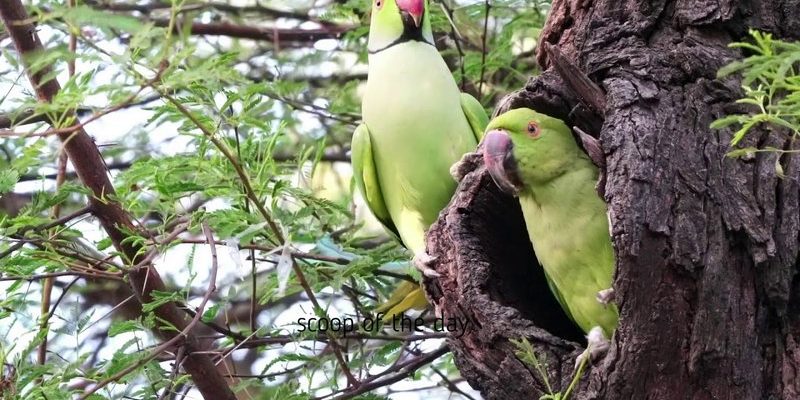
Imagine a parrot as a proud parent, carefully selecting the perfect spot for their nest, somewhat like how we might choose the coziest corner of our homes for comfort. In this article, we’ll dive into the fascinating world of parrot nesting habits and their lifecycle, breaking it down step by step for anyone curious about these charming creatures. If you’ve ever wondered how parrots make a home for their babies or what happens during the nesting season, you’re in the right place!
Understanding Parrot Nesting Habits
Parrots are known for their social nature, and this extends to their nesting habits. Often, they prefer to nest in tree cavities or hollowed-out logs. These spaces provide safety from predators and a cozy environment for their eggs. You might be surprised to learn that not all parrot species build nests in the same way. Some, like the African Grey, are more inclined to use existing tree holes, while others may create their nests in the ground or even in crevices.
Besides safety, location is key for attracting a mate. Many parrots will choose areas that are rich in food and resources. Can you imagine picking a neighborhood based on the best coffee shops? Parrots think similarly, ensuring their chosen nesting spot has plenty of seeds and fruit nearby for sustenance while raising their young.
Moreover, the nesting process can be quite a sight. During courtship, many species engage in elaborate displays and vocalizations, helping to strengthen their bond and find the right partner. This is not just about finding love; it’s about teamwork. Because once a pair decides to mate, they’ll share responsibilities in raising their chicks.
The Nesting Process: A Step-by-Step Guide
So, what happens once a pair of parrots decides to make a nest? Here’s a simple breakdown of the nesting process:
- Choosing the Location: Once they find a suitable spot, the couple will begin to prepare the area, often cleaning it out and making it cozy.
- Creating the Nest: They may line the inside with feathers, twigs, or even soft plant material to create a comfortable environment for their eggs.
- Laying Eggs: The female typically lays between 2 to 8 eggs, depending on the species. These eggs are usually white and quite fragile.
- Incubation: The female will incubate the eggs for about 18 to 30 days, depending on the species, while the male helps by bringing food and protecting their territory.
During this time, the parental bond strengthens, and both birds become highly attentive to the future of their family. It’s a beautiful reminder of how nurturing behavior can be seen across many species, not just humans!
The Lifecycle of Parrots from Egg to Adult
Once the eggs hatch, the challenges aren’t over. Let’s explore what happens next in a parrot’s life cycle.
- Hatching: Baby parrots, or chicks, are born altricial, meaning they’re born blind and helpless. They rely entirely on their parents for warmth and food.
- Feeding: Parents will feed their chicks a regurgitated mixture of seeds and fruit. This nutrient-dense diet is crucial for rapid growth during their early days.
- Fledging: After a few weeks, the chicks begin to gain feathers and strength, leading to their first attempts at flight, called fledging. This can be a clumsy but heartwarming sight!
- Independence: Once they fledge, young parrots will continue to depend on their parents for food and protection for several weeks before starting to forage on their own.
The journey from hatchling to independent parrot usually takes several months. During this time, they learn crucial survival skills from their parents, like how to find food, avoid predators, and socialize with other parrots.
Common Nesting Challenges Parrots Face
While parrot parents are often quite dedicated, the nesting process can come with its own set of challenges. Here are a few common issues they might face:
- Predation: In the wild, nests can be vulnerable to predators such as snakes, raccoons, and even other birds. This is why many parrots choose high, secluded areas for nesting.
- Environmental Factors: Weather can be unpredictable. Heavy rains or strong winds can disturb the nesting area, putting eggs and chicks at risk.
- Human Encroachment: Urbanization often leads to habitat loss. Parrots may struggle to find adequate nesting sites in areas where their natural habitats have been destroyed.
These challenges highlight how crucial it is for us to protect their habitats and support conservation efforts. Every little action counts when it comes to preserving these vibrant species.
Social Structures and Nesting Behavior
Interestingly, parrot nesting habits also reflect their social structures. Many species are quite communal, with several pairs nesting close to one another. This can provide protection and social interaction, allowing them to thrive.
In some species, you might even see groups of youngsters from previous years helping to feed or guard the new chicks. Isn’t that fascinating? It’s like having a big family get-together where everyone plays a role in raising the kids.
This social behavior is essential for survival, as it not only helps protect the young but also fosters camaraderie within the flock. It creates a nurturing environment where young parrots can flourish, further enhancing their chances of survival as they grow.
How Do Parrots Adapt Their Nesting Habits?
Parrots are masters of adaptation, and their nesting habits are no exception. Depending on their environment, different species have developed unique ways to ensure the survival of their young.
For instance, some parrots, like the Cacique, will nest in colonies, taking advantage of the security that numbers provide. Others, like the Macaw, might choose isolated trees high above the ground to evade predators.
Moreover, their nesting behavior can change based on available materials and environmental conditions. For instance, in areas with fewer tree cavities, parrots may innovate by using man-made structures or even cliffs to raise their young.
This adaptability not only helps them survive but also highlights their intelligence and resourcefulness in the face of challenges. It’s a testament to how nature can inspire creativity!
From the moment they carefully select a nesting site to the joyful sound of fledglings taking their first flight, the nesting habits and lifecycle of parrots are a captivating mirror of nature’s beauty and resilience. By understanding these behaviors, we not only gain insight into their world but also emphasize the importance of conservation efforts to protect their habitats.
Parrots, with their vibrant personalities and complex social structures, remind us of the intricate ties within nature. Every step in their lifecycle—from egg to adult—carries the weight of survival, community, and adaptation. As you sip your coffee and ponder these wonderful creatures, remember that every action counts when it comes to preserving their futures. Let’s celebrate and protect these amazing birds!

